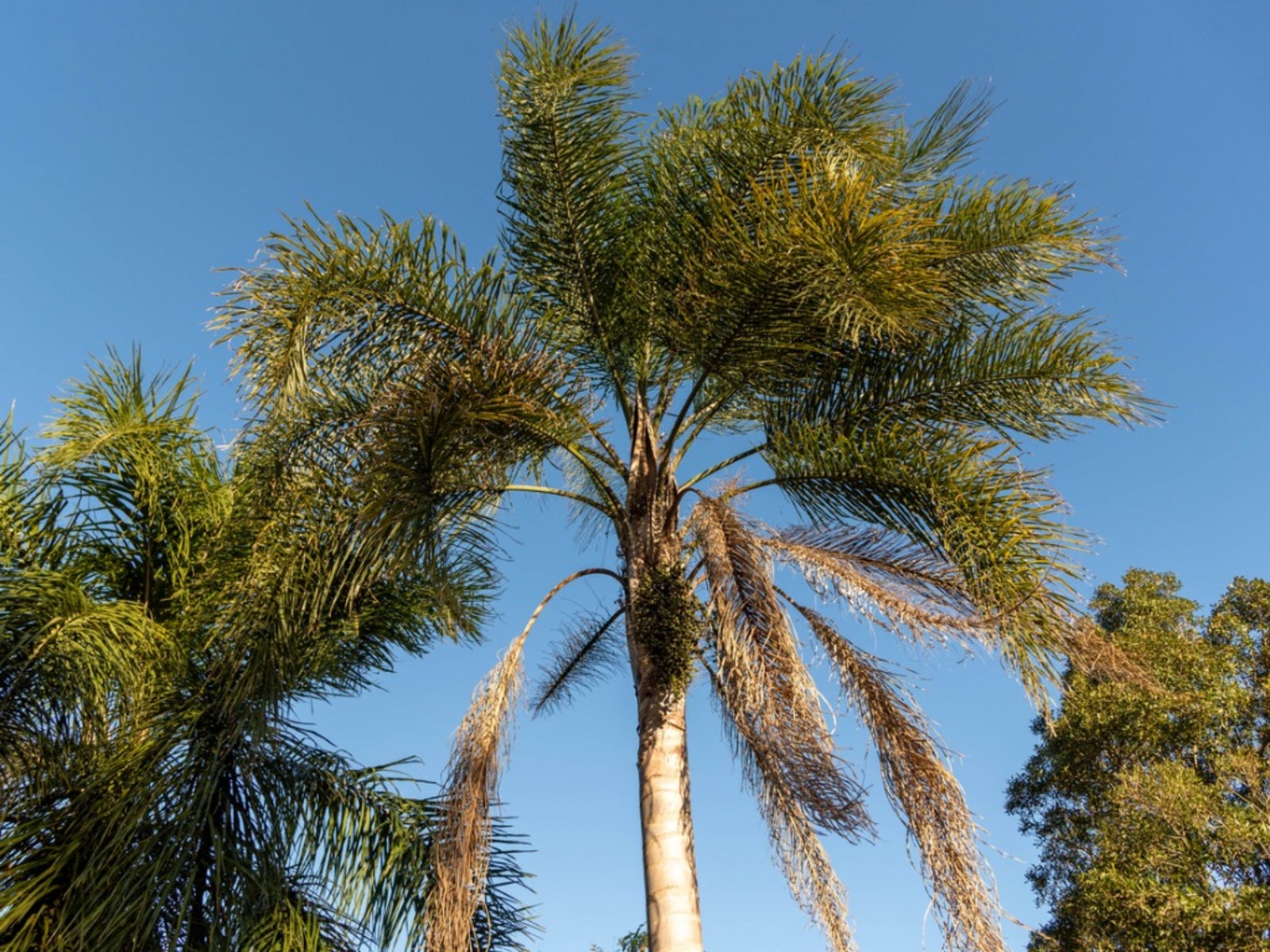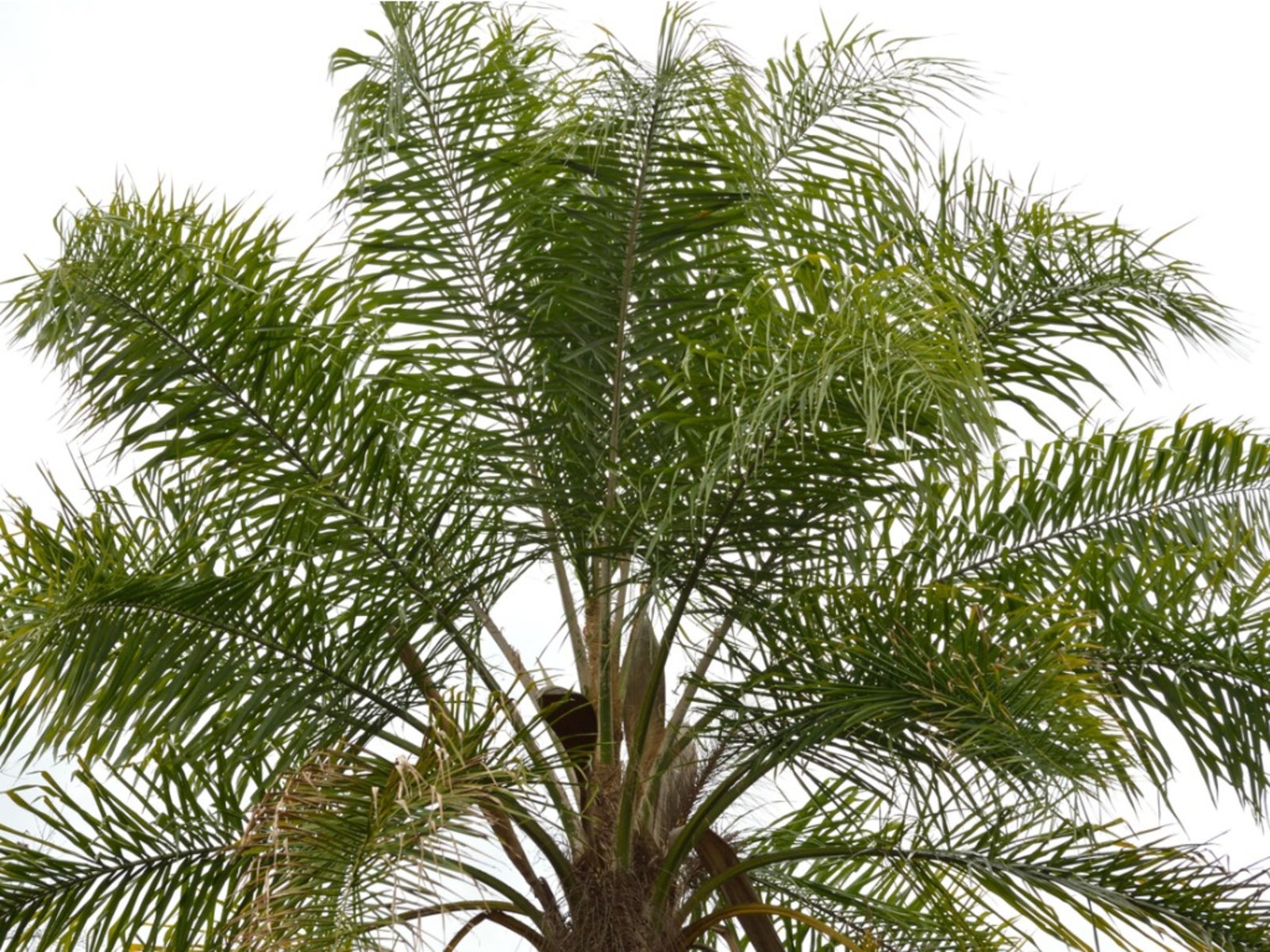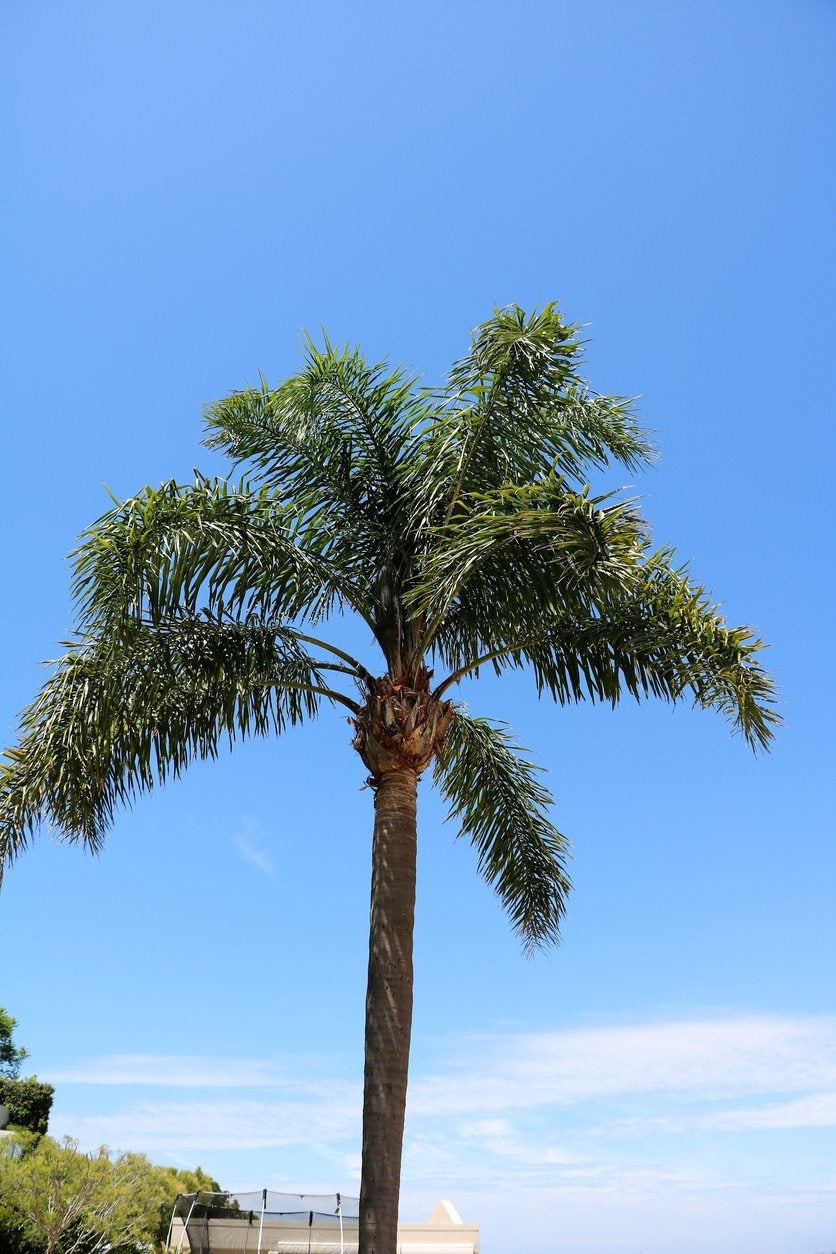Winterizing Queen Palm Trees: Care Of Queen Palm In Winter


Palm trees recall warm temperatures, exotic flora, and vacation type lazes in the sun. We are often tempted to plant one to harvest that tropical feel in our own landscape. Queen palms are hardy in USDA zones 9b to 11, which makes them intolerant of the temperatures in most of our country. Even warm regions, such as Florida, tend to fall into an 8b to 9a zone, which is below the Queen palm's hardiness range. Queen palm cold damage can be fatal in extreme winters. For this reason, knowing how to overwinter queen palms is a must to protect your investment.
Queen Palm Cold Damage
The queen palm (Syagrus romanzoffiana) is a majestic tropical tree that can grow up to 50 feet (15 m.) in height. It is easily damaged by temperatures below 25 degrees F. (-3 C.). Winterizing queen palm trees that are at their mature height is nearly impossible. Smaller specimens can be protected from light freezes and snow. If exposure is brief, queen palm cold damage may be recoverable. There are some things you can do to minimize any adverse issues with a little extra care of queen palm in winter. The types of queen palm cold damage will vary due to the plants exposure and location. Low exposure will result in tattered and discolored fronds. Heavier damage will result in a condition called spear pull, where the frond easily slips out of the trunk when you pull on it. The stem will be soft and wet. This condition is rarely recoverable. Even worse is meristem death. This is when a freeze causes areas of the trunk to discolor and eventually start to rot. Fungal issues soon develop and within months the fronds will all drop and the tree will be on its way out. As bad as all this sounds, queen palms can recover from light cold exposure, which is usually what occurs in areas where they are grown. Applying a few ideas for care of queen palm in winter will enhance the plant's chances of survival.
Queen Palm Winter Care for Young Plants
Young palms are especially vulnerable to cold damage because they haven't developed deep enough root systems to ensure the base of the plant survives. Plants in containers can be brought indoors for winter. Those in the ground should be mulched around the base. For extra protection when a freeze is due, put a bucket or garbage can over the crown with holiday lights inside. The lights emit just enough warmth and the covering keeps heavy snow and icy winds from the fronds.
How to Overwinter Queen Palms
Winterizing queen palm trees is essential if your region ever expects freezing temperatures. The young plants are easy to protect, but the big mature beauties are much more difficult. Holiday or rope lights help add ambient warmth. Wrap the trunk and the fronds. To make this more effective, build a scaffold around the plant. Then you can cover the entire plant in frost barrier fabric. This is an important part of queen palm winter care where even an extended frost can cost the plant much of its vitality. A product also exists that is a spray on protection. Whichever method you choose, follow in late summer to early fall with an appropriate fertilizer. Well-nourished trees are much hardier than nutrient deprived tissues.
Gardening tips, videos, info and more delivered right to your inbox!
Sign up for the Gardening Know How newsletter today and receive a free copy of our e-book "How to Grow Delicious Tomatoes".

Bonnie Grant is a professional landscaper with a Certification in Urban Gardening. She has been gardening and writing for 15 years. A former professional chef, she has a passion for edible landscaping.
-
 Looking For Plants To Give You The Soft And Fuzzies? Try These 5 Fuzzy Leaf Plant Options
Looking For Plants To Give You The Soft And Fuzzies? Try These 5 Fuzzy Leaf Plant OptionsLovers of texture, drama, silver foliage and tactile plants will adore these special sensory garden additions. These fuzzy leaf plant options will leave you all aglow
By Susan Albert
-
 Get Ready For A Summer Of Hummers! Grow These Full Sun Hummingbird Plants and Flowers
Get Ready For A Summer Of Hummers! Grow These Full Sun Hummingbird Plants and FlowersIf you’re lucky enough to enjoy a sunny backyard, make sure you are maxing out on your pollinator opportunities and grow these full sun hummingbird plants and flowers
By Tonya Barnett
-
 Can You Grow Queen Palms In Pots: Tips For Potted Queen Palm Care
Can You Grow Queen Palms In Pots: Tips For Potted Queen Palm CareAlthough queen palm is suitable for growing outdoors in USDA zones 9 through 11, gardeners in cooler climates can grow queen palms indoors, providing an elegant, tropical feel. Click this article to learn more about growing queen palm houseplants.
By Mary H. Dyer
-
 Queen Palm Care – Learn How To Grow A Queen Palm
Queen Palm Care – Learn How To Grow A Queen PalmQueen palm trees are stately, single-trunked palms topped with glossy, bright pinnate leaves that droop softly in a graceful canopy. Queen palm trees are popular landscape trees in warm regions. For more queen palm tree information, click this article.
By Teo Spengler